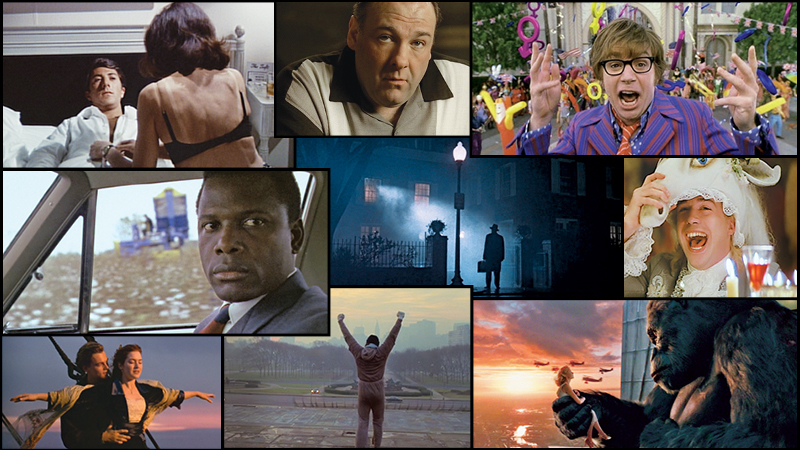

Choreographing dry is certainly easier than choreographing for rain. But it wasn’t a problem. To make the rain, there had to be big stretches of pipes with holes in them, and water pressure. [Co-director Gene Kelly and I] imagined all these things, and then choreographed every instant. There’s almost no improvisation, no room for that in a musical sequence. You can’t change it. It’s fixed. It’s recorded. He’s got to get from A to B to C to D exactly in time. We shot this whole sequence in maybe two and a half or three days. There aren’t a lot of setups. But that’s generally how I like to do it. I want the viewer to believe that it’s happening, and that there’s nobody in charge.
For Full Article: Stanley Donen on Singin' in the Rain
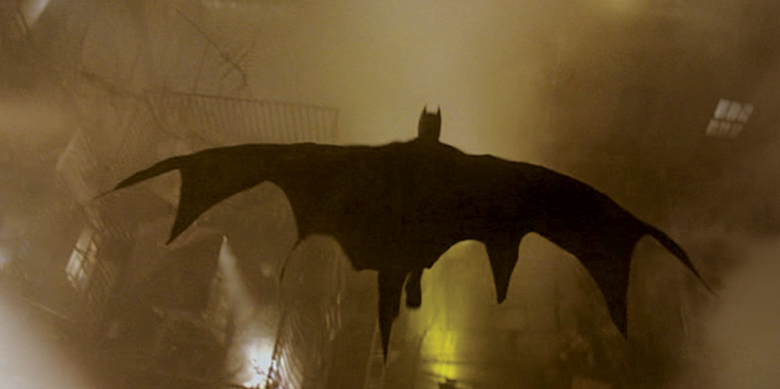
We wanted to give the audience the appropriately large-scale action finale without losing sight of the characters and narrative thread. We wanted a sense of Batman diving down into this apocalyptic scenario. We had two cable rigs, one for the stunt guy and one for the cable camera that would move independently. They would launch in concert and track above Batman as he went down. The visual effects guys said they could have the wings open more effectively, so I said, ’When it’s indistinguishable in terms of reality from what we have on the in-camera shot, we’ll swap it out.’ In the end, it was well worth our while to shoot things in camera as much as possible, because even where we replaced what we had shot with CG, the CG only worked because we had something in camera we could hold to.
For Full Article: Christopher Nolan on Batman Begins
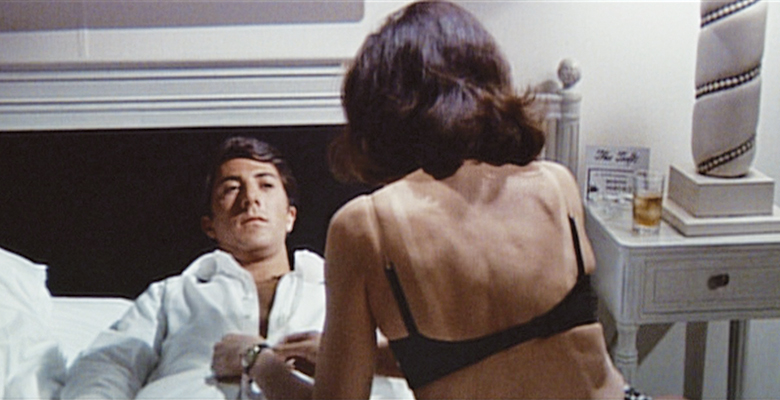
Dustin [Hoffman] and I understood each other about Ben’s inexpressiveness. He was good at the depersonalization of the character, he knew about it. We did a lot of fancy camera shit, but nobody has ever mentioned it in 40 years because if you have events that are compelling you’re completely unaware of what the camera is doing. In this shot, we panned and tracked to get him to the bed. We’re still fairly far back on the set with the zoom. Basically the look of the picture is that zoom. I think we used it on almost everything. I wanted to express the despair of an affair that is just below the waist and he has no real connection to it, so the montage is how it goes on once conversation fails. It’s quite extreme but it needs to be. There is no interpersonal interaction. It’s not just for good taste that we skipped the sex.
For Full Article: Mike Nichols on The Graduate

These shots in the car were all handheld, I think. [Cinematographer] Haskell [Wexler] was essentially a documentary filmmaker, ahead of his time. We were working with old Bolex cameras. This was no camera mount, he’d just get in the car. In those days, we never thought of using process shots. We did everything physically. We timed this [reaction] to music that hadn’t been written yet, which would eventually play over this. ’In the Heat of the Night,’ the song sung by Ray Charles on the soundtrack, wasn’t written at this point, but at least I could time things to a rhythm. We did a lot of that kind of shooting. In other words, I just hummed the music and snapped my fingers, and got the rhythm of the shot.
For Full Article: Norman Jewison on In the Heat of the Night

In the novel, William Peter Blatty’s description of Father Merrin [Max von Sydow] arriving outside the home of the child’s mother says he was standing under a streetlight in a misty glow ’like a melancholy traveler frozen in time.’ I had to find a way to visualize that, and I allowed a full day to light the scene. We used arc lights and Troupers to light the street, in addition to boosting the practical lighting like the streetlamps. After a great deal of trial and error, we filmed on the second night. The painting that inspired me was René Magritte’s The Empire of Light that depicted a small house at night lit by a streetlamp, but the sky in the painting is flat-out daylight. It’s an amazing surrealistic image. I’ll be honest with you, if I was making The Exorcist today, I still wouldn’t use much CGI.
For Full Article: William Friedkin on The Exorcist
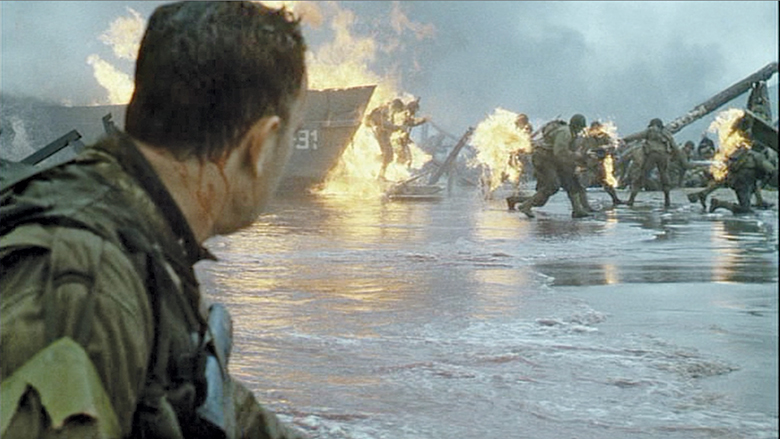
Capt. Miller [Tom Hanks] finally makes it ashore, but a mortar shell exploding nearby basically rang his bell. I wondered what it would be like for him to observe these massive losses without hearing the screams or all the whistling shells, would it be even more horrific? I had to shoot [the D-Day invasion sequence] one step at a time because that’s the way the Rangers took the beach: one inch at a time. As a result, I was able to make up this whole sequence as I went along, to come up with shots on the spur of the moment. It helped make things a little more chaotic and unpredictable.
For Full Article: Steven Spielberg on Saving Private Ryan

We had given ourselves an eight-day window to shoot this in the afternoons, which gave us eight bites at the apple to get a sunset. We had horrible, bald, blue skies seven days in a row, where the sun went down to the horizon with just no character whatsoever. On the eighth day, the sun burst out and we got this incredible golden light on the actors. At the time we were shooting another scene, and Kate [Winslet] had to go through a complete wardrobe, wig, and corset change, then race back to the set. When she jumped onto the ladder she took one look at the sun and turned and yelled at me as loud as she could, ’SHOOT! SHOOT NOW!’ [laughs] I’d never heard an actress do that before.
For Full Article: James Cameron on Titanic
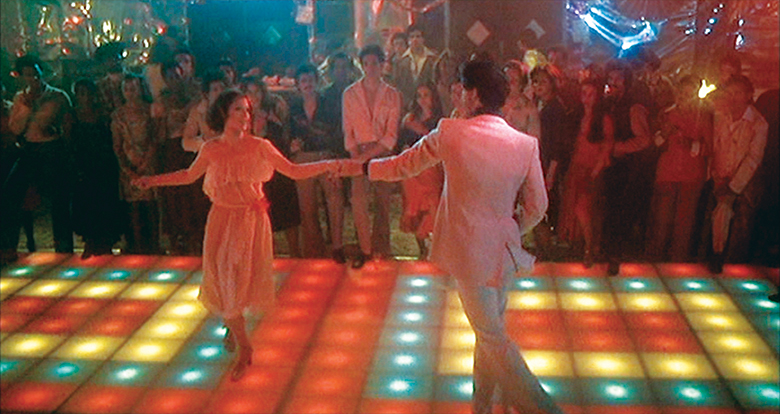
This is not just a dance, it’s the major turning point of the film. With dance, and certainly with action, you can compose shots to the way the figures go because they’re in motion—it makes for beautiful composition. This is a very gentle move, to give you the geography of the place and the mood without being static. The biggest thing we did was put in that floor. Simple electronics made the lights go to the beat of the music, but it was better to do it manually, so we could be exactly in sync with what the dancers were doing. Here we’re going with as much romanticism as we could.
For Full Article: John Badham on Saturday Night Fever
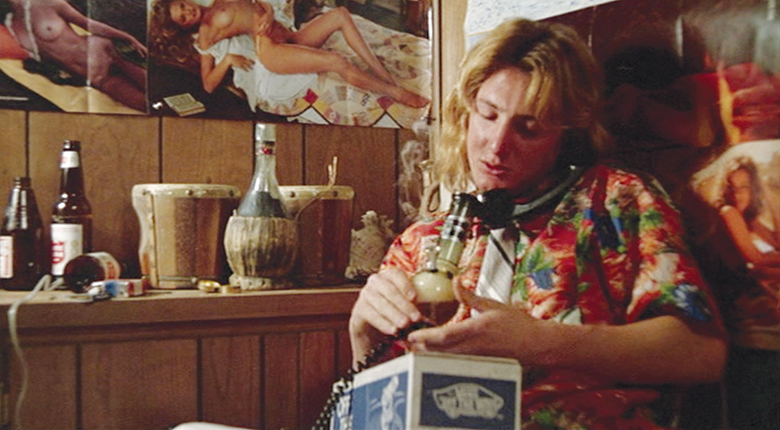
There was a lot of drug use in the movie, but the studio was fine with it—it was all in the script, and they wanted us to tell it like it is. The scene in Spicoli’s bedroom where he’s getting stoned was probably shot in no more than half a day. The set was, like, two cheesy walls. At first, Spicoli [Sean Penn] is on the phone talking to Eric Stoltz’s character, who was only supposed to be a voice on the phone. At one point, Sean hits himself in the head with his shoe and says, ’That was my skull! I’m so wasted!’ I wanted to keep that, but I didn’t want to be stuck on that one shot. So I thought, we’d better get Eric on camera. We ran around the stages, found a bathroom set and put him in there. It was very much ’What’s here, and how can we use it?’
For Full Article: Amy Heckerling on Fast Times at Ridgemont High

I said to [James] Gandolfini, the bell rings and you look up. That last shot of Tony ends on ’don’t stop’ [from Journey’s ’Don’t Stop Believin’], it’s mid-song. I’m not going to go into [if that’s Tony’s POV]. I thought the possibility would go through a lot of people’s minds or maybe everybody’s mind that he was killed. I thought the ending would be somewhat jarring, sure. But not to the extent it was, and not a subject of such discussion. I really had no idea about that. The biggest feeling I was going for, honestly, was don’t stop believing. It was much more on the nose than people think. Life is short. Either it ends here for Tony or some other time. But in spite of that, it’s really worth it. So don’t stop believing.
For Full Article: David Chase on The Sopranos

I carefully designed and storyboarded this opening sequence shot-for-shot and we threw everything into this last shot: women with Laugh-In body paint, dancers, Col. Sanders on stilts, and Uncle Sam! I went to Mike [Myers] and said, ’What else could we possibly throw in?’ He said, ’Well, would it kill you to have someone juggling kittens with sparks coming out of their ass?’ He was joking but my visual effects guy filmed me juggling stuffed kittens and used a grinder to create some sparks, so in the bottom left of the final image, I’m juggling kittens with sparks coming out of my ass.
For Full Article: Jay Roach on Austin Powers in Goldmember
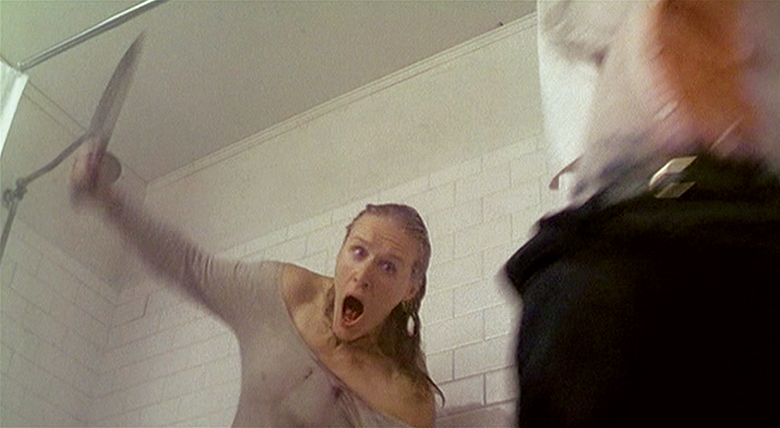
This moment starts with a nice shot of the water in the bathtub looking absolutely flat—no music, no nothing—before [Glenn Close] rears up, which I think is lovely, sort of extending the agony. It always helps when you dutch [tilt] the camera a little bit, when you angle it, so that it’s not just flat-on. Also, it’s much more interesting if the camera is below her than at her level. There was incredible adrenaline shooting the scene, and most of the stuff was handheld. Close-ups are incredibly important, but you can’t do it all tight or people get lost and frustrated. There has to be a beat where you get the geography. Otherwise, it’s just a mishmash of shots.
For Full Article: Adrian Lyne on Fatal Attraction

We were at the [Philadelphia Art] museum for about two hours that day; I just told Sylvester [Stallone] to start at the bottom and stationed [Steadicam inventor] Garrett [Brown] near the top. I explained to Garrett that when Sylvester ran up and was opposite him, he was to run right along with him and up the stairs, hold on to him as a full figure, then come around and move in closer for just a head-and-shoulders shot at the end. That’s what was so great about using the Steadicam—we could do all of this stuff without having any big crews and a fancy crane and god knows what else. If it wasn’t for the Steadicam, it would have been a very time-consuming exercise.
For Full Article: John Avildsen on Rocky
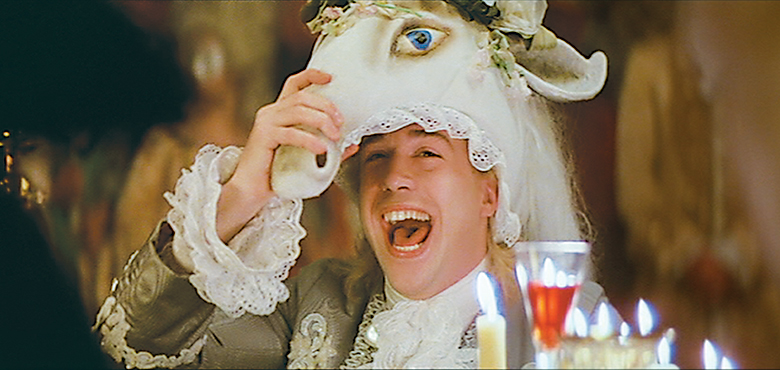
Mozart laughs because he sees the smiling face of [his father’s] mask. But then the father takes off the mask, and under this smiling mask is this very stern and severe and judgmental look of his father. I wanted to have this kind of a contrast there. It was very important for me to see the desperate Mozart’s effort to placate his father. This is probably a 75 mm lens. I never use storyboards. I always like to come on the set and see the reality around me. Then I rehearse with the actors in the space [and] only then do I decide how to cover the scene. I do a composition so that it pleases my eye. Of course, whatever composition and angle I choose has to serve the story.
For Full Article: Miloš Forman on Amadeus
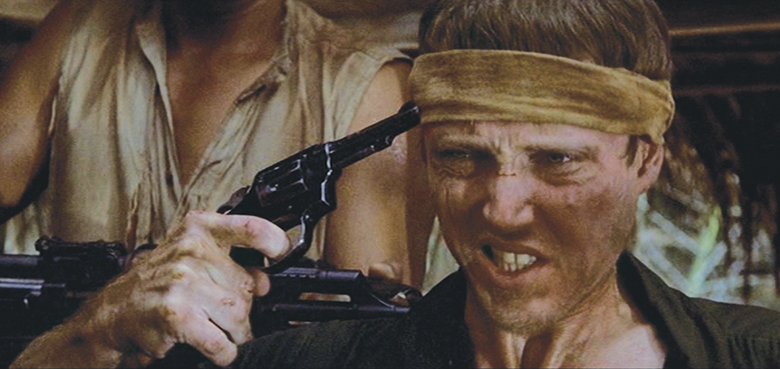
The Russian roulette was a shorthand way of showing what it means to wait. It’s a dramatic device, a way of demonstrating the real terror of war, which is waiting. The question is, how do you dramatize waiting? This is the perfect metaphor. I did as much as I could to get the actors into a combat-ready mode. I asked Bob [De Niro], Chris [Walken], and John [Savage] to wear their clothes the whole time we were in Thailand, to sleep in them, and not to take a shower. So the three of them stunk like hell. I didn’t want a wardrobe person cleaning them up just to have a prop man dirty them up.
For Full Article: Michael Cimino on The Deer Hunter

It was a time where it seemed to me that if we were going to depict violence, then we would be obliged to really depict it accurately. It was not a documentary, so I got the idea to break the components of the massacre into something romantic, even balletic. I didn’t want it to be just a savage killing, which normal speed would have delivered. I wanted a residue of their romantic view of the world while they were being killed. So I rigged three high-speed cameras together at exactly the same vantage point but at different speeds with different lenses, to slow the action. Then there was our basic camera running at normal speed. The different speeds mitigated the savagery.
For Full Article: Arthur Penn on Bonnie and Clyde
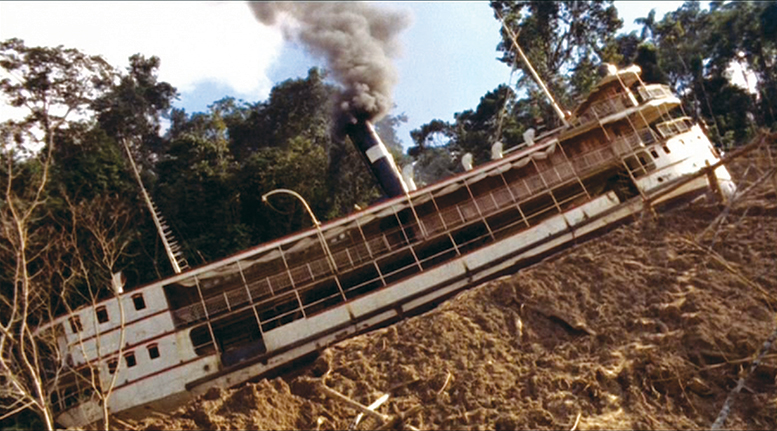
Here, you have to see the entire ship moving. The crew understood that it had to be in one single shot. And if we failed to do that, the film was going to fail. There was no coverage, it’s just what it is. And you are a witness. In shots like this we would have a second camera next to the main position. Doing any closer shots would have meant losing a lot. What you see here is one shot, one chance to do it, and so you had better do it wide angle. You see, I’m not into this Hollywood mood or this film school mood where you cover in a close-up. How does a close-up help you here?
For Full Article: Werner Herzog on Fitzcarraldo

All of Manhattan is artificial, and all of the Empire State Building is computerized. We had a chair on a pole that Naomi [Watts] could sit in, that would approximate the way her body was draped in Kong’s fingers, and around the front of the chair was a blue piece of foam rubber, like a big sausage. We never used a mechanical hand. The clouds are a photograph of a Wellington dawn in New Zealand. I didn’t want to give the arrival of the planes away, so they just burst into the background right between their eyelines during this long, slow push in toward Ann and Kong. He’s empathizing with another living being for the first time, and the planes are an ominous introduction to what’s going
to happen next.
For Full Article: Peter Jackson on King Kong

[The rooftop chase in Tangier] required a huge rig that took a long time to set, a couple of weeks, because we had cranes all the way along the buildings and a Skycam that ran the length of that roof on a gigantic track. We looked for a long time to find a run where you could feel Bourne [Matt Damon] is absolutely at top pace. I like to use zooms, which slightly softens out the back and gives you perspective, makes the character feel etched. He’s running toward the camera and you feel there’s depth between the camera and him, so it makes you feel like you’re in the shot.
For Full Article: Paul Greengrass on The Bourne Ultimatum
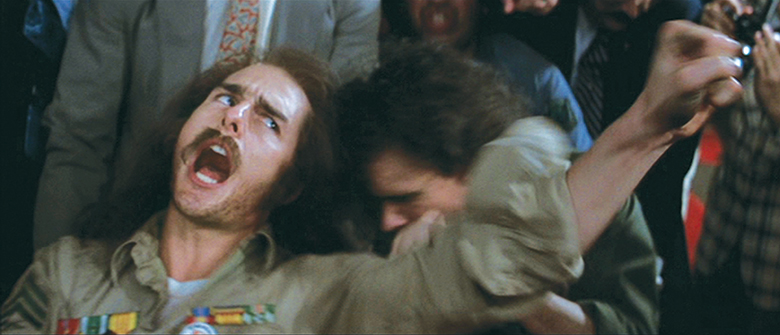
The Secret Service [men] are trying to get Ron Kovic [Tom Cruise] out of the convention hall and the veterans have locked their chairs down, and that makes it harder for them to be dragged out.
We got a beautiful 35 mm look here, which has crisp, clean colors, and full-out anamorphic. Actual [Republican] convention footage from 1972 is blown up from 16 mm to 35 mm and you can see the big golf ball-sized grain. Let me tell you, it’s hard to go from an old 16 mm shot of Nixon at the convention to a big, new 35 mm look. It’s illusion created through editing. The sequence works because of the cutting. It’s the old suspension of disbelief.
For Full Article: Oliver Stone on Born on the Fourth of July